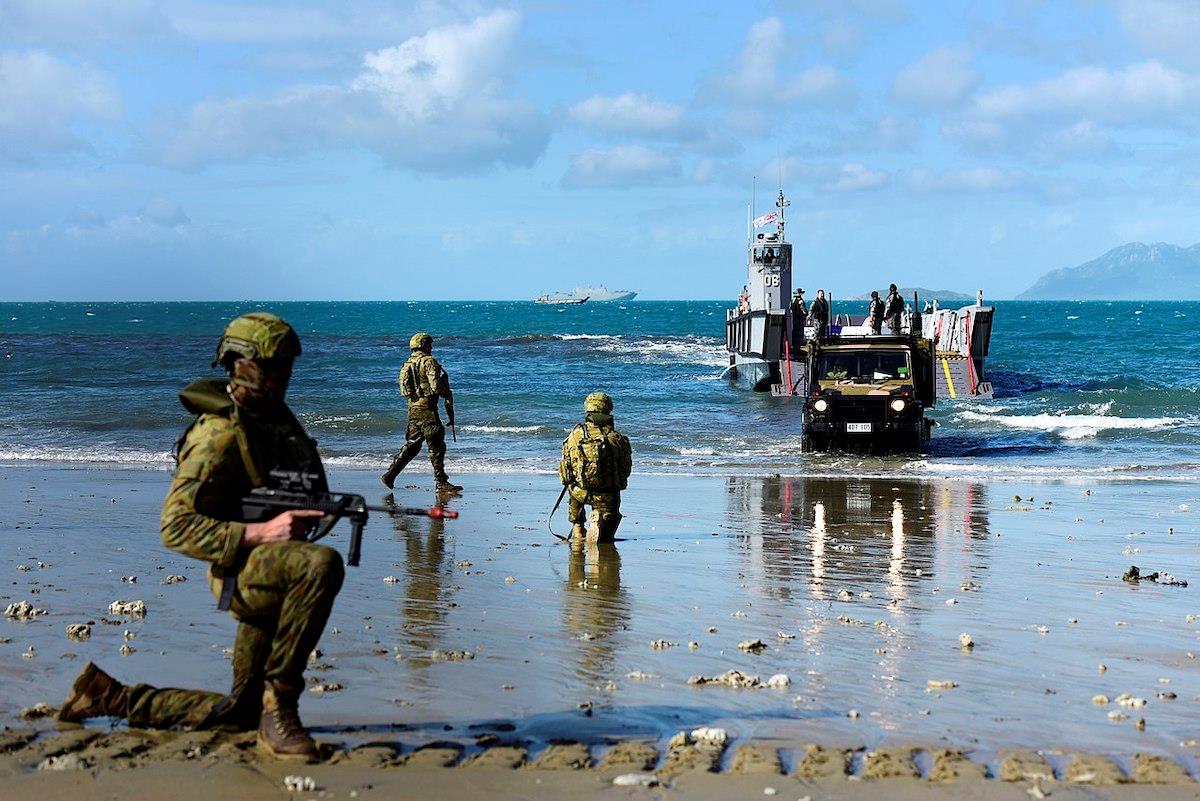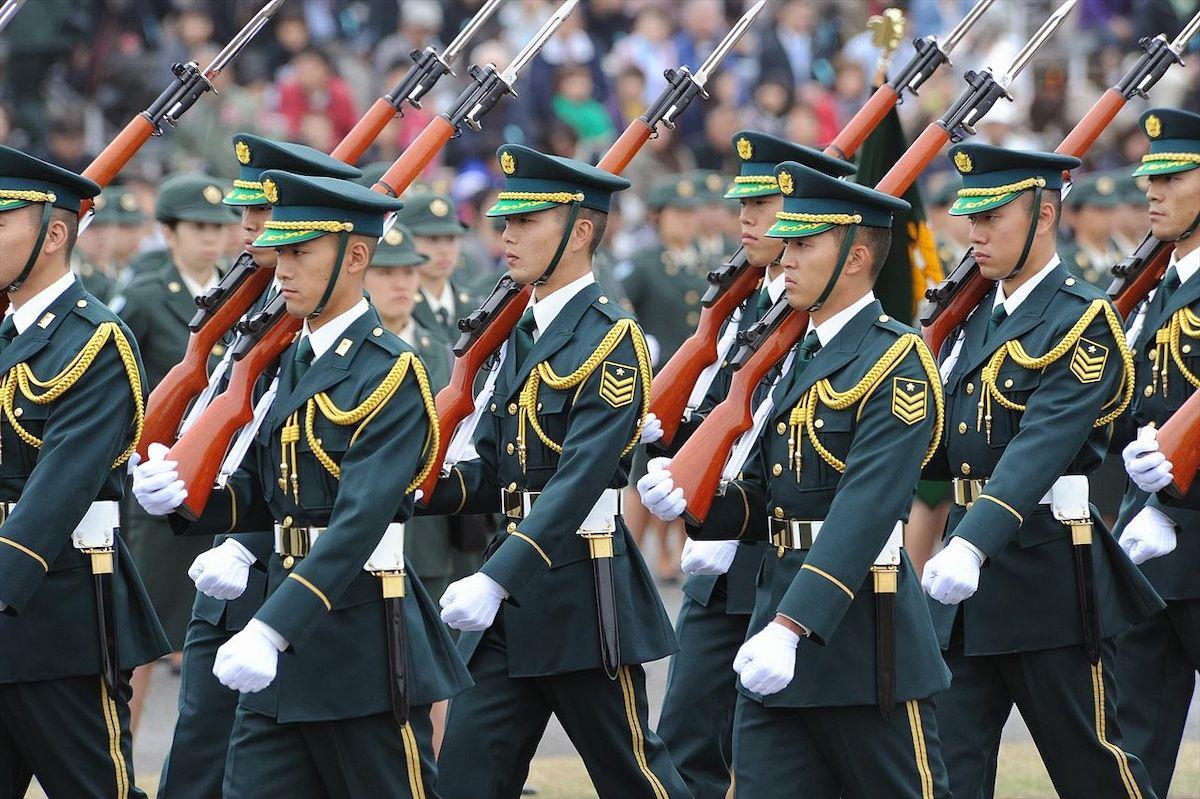(MENAFN- Asia Times)
The Australian and Japanese prime ministers met virtually on January 6 and signed a reciprocal access agreement (RAA) that makes it easier for each nation's troops to operate in each other's country.
As important, it strengthens the political and psychological groundwork for increased military cooperation between the two nations. It's the first such agreement Japan has signed with a country besides the United States. And it took a while.
An agreement in principle was reached in November 2020 between Japanese Prime Minister Yoshihide Suga and Australian Prime Minister Scott Morrison – after six years of negotiating. It took another 14 months to finalize the deal.
The door is now open wide in both directions for practically any initiative the two sides desire.
One should remember, however, that the Japanese and Australian militaries are not strangers. Japanese forces have been training in Australia since the early 2010s, which included sending ships and troops to Talisman Sabre and other exercises. Japanese ships have also exercised alongside the Royal Australian Navy in the Indian Ocean Malabar Exercise and in the South China Sea.
Individual Australian Defence Force personnel have been assigned to Japan for decades. And Royal Australian Air Force aircraft have used US bases in Japan (under United Nations auspices) in recent years while enforcing North Korea sanctions.
And in September 2019, a detachment of Australian F-18s conducted the first joint combat exercise with the Japan Air Self-Defense Force in Japan.
A decade ago, most observers considered a Japan-Australia RAA and all the above activities to be impossible. Chinese threats, pressure and saber-rattling do indeed have a silver lining. Now that the deal has been signed, the important thing is what both sides make of it. There are some easy things to start moving forward with.

US Air Force, Japan Air Self-Defense Force and Royal Australian Air Force aircraft fly in formation during an exercise at Cope North in 2015, off the coast of Guam. Photo: WikiCommons / US Air Force / Tech Sergeant Jason Robertson
An Australian Army liaison officer is now assigned to the Japanese Ground Self-Defense Force's Ground Combat Command in Japan. But that's not so useful. It will be better to see an Australian liaison officer or two assigned to the Japan Self-Defense Forces headquarters in Tokyo.
The right officers, doing some pushing and persuading – and with some help from the US Marines and US Navy – can move the Australia-Japan defense relationship forward on a far broader front than just army to army.
And when the Americans and Japanese finally establish a joint headquarters in Japan (hopefully before hell has frozen over), the Australians should be an integral part of it.
Another helpful initiative would be sending an RAAF squadron to Japan on long-term deployment and, vice versa, a Japan Air Self-Defense Force squadron to Australia. Bringing the Australian army and navy to exercise in Japan is also easy.
Besides the favorable optics of the JSDF and ADF operating together, Japan benefits from deeper exposure to another military and different ways of doing things. And both benefit from the psychological and political ties that come from deeper military-to-military relations.
The JSDF need opportunities for realistic training to better professionalize itself. It can't do this in Japan, owing to limited training areas and excessive local restrictions. Australia offers excellent opportunities for all three JSDF services to train by themselves, together and with other militaries.
Australia's Northern Territory, in particular, is the best place in the entire hemisphere for the sort of unrestrained, combined arms training that Japan desperately needs. The JSDF's only alternative is to make the trip to Southern California – and even then, US training facilities are not as good as those in the Northern Territory.
Here's one idea: combine Japanese and Australian amphibious forces into a joint task force to master the complex air-sea-ground coordination that is part and parcel of amphibious operations – but also applicable to a broader range of military operations.

Australian Defence Forces provide security as vehicles come to shore from light landing craft as part of Exercise Horizon in Bowen, Queensland, on May 28, 2018. Photo: WikiCommons
Send a Japanese amphibious ship – even an older tank landing ship – and a battalion of Japanese 'marines' from the Amphibious Rapid Deployment Brigade down to Australia for six months and operate out of Darwin, as well as over in Queensland, with Australia's amphibious force.
It's a good way to give the new unit some real experience outside Japan, in an unfamiliar environment and with foreign forces. That's how a military improves. Australia's amphibious force can also use the practice.
Maybe the two could operate the Australian-Japanese task force up into Southeast Asia or throughout Oceania, with training in humanitarian assistance and disaster response as one of its missions. That's urgently needed as Chinese influence steadily expands in the region.
This is all far preferable to the canned exercises in Kyushu or Hokkaido – with 'commissars' at JSDF headquarters in Ichigaya nearby to keep the training as 'safe' (in other words, unrealistic) as possible – while cowering in fear that somebody might complain the training is“too noisy” or“scary.”
But isn't the Talisman Sabre exercise enough? Maybe just make it bigger?
No. Talisman Sabre is a good exercise. But for the participants, such exercises can become like a piano player who practices only one song. They might play it perfectly, but it's still just one song. Moreover, it's a song opponents have had time to study.
The RAA is politically important. Rather than giving in to Beijing's threats and bullying, two of Asia's key democracies are deepening their defense ties – with the potential for creating real operational capabilities – and employing them around the region.
The RAA also belies Beijing's shrill claims that regional nations dislike Japan because of World War II and fear a remilitarized Japan. The Australians have as much reason as anyone to hold a grudge, but they've long since recognized that today's Japan isn't 1930s or 1940s Japan.
Take away Korea and China, and that's the feeling throughout most of the Indo-Pacific, if one looks closely. The RAA is also good news for the Americans.

The Nimitz-class aircraft carrier USS Carl Vinson (CVN 70) transits the Bay of Bengal as part of Maritime Partnership Exercise (MPX) 2021, October 16, 2021. Photo: US Navy / Mass Communication Specialist 3rd Class Nicholas R. Carter
For starters, US forces are overstretched regionally and worldwide.
Whatever the JSDF does in or with Australia feeds into the United States' desperate (though unstated) need for a more capable JSDF. That means a JSDF capable of fighting in its own right, and also as an ally. And this is no less beneficial to Australia – which is game, but not big enough to defend itself against an angry China.
As important, increased Japan-Australia activities break down the hub-and-spoke nature of the US presence in the Pacific. That's a construct that has American forces operating too often bilaterally with Asia-Pacific nations (the 'spokes').
The spokes need to operate together – creating a more durable web – without the Americans driving things. Doing so improves capabilities and also deepens the psychological and political ties that come from military-to-military engagements between like-minded nations.
This doesn't mean the Americans are excluded or unnecessary, but rather it bolsters the US presence as part of a more complex and stronger web of defense relationships. It should be seen as cross-bracing rather than as a replacement or a hedge.
The web approach is particularly important because, given that the countries involved are democracies where policies can change with elections, the more there are overlapping defense relationships, the more likely the region as a whole can continue to build its defense posture even if the government changes in one of the partners.
Beijing is of course displeased with the RAA and will use its levers to try to stifle it before it can fully form.
Japan's once-powerful pro-Beijing constituencies in the political, official and business worlds are quiescent for now, but that can change. Given this, one wonders if Prime Minister Fumio Kishida's administration might put a brake on attempts to do more with Australia on the military front.

Members of Japan's Self-Defense Force on parade. Photo: WikiCommons
Something similar may even play out in Australia should the Labor Party win the next election. Laborites say they won't, but one wonders.
Also, hopefully, the Japanese government doesn't see the RAA as meaning Japan needs to do less defense-wise.
Kishida needs to allow the JSDF to up its game considerably. Japan's military still needs more money (for training and personnel) and to meet recruiting targets that it has missed by 25% annually for years. The JSDF is still not ready to fight a war – needing, among other things, a joint capability (which it doesn't have).
Too often it seems that signing an agreement is an end in itself.
So here's an idea. A year from now, let's hold another press conference and see what has actually been accomplished out of the RAA – and what the Japanese and the Australians are doing with each other – that could only have happened because of the RAA.
Sometimes it's good to keep score.
Grant Newsham is a senior fellow at the Center for Security Policy and a research fellow at the Japan Forum for Strategic Studies. He is a retired US Marine, a former diplomat and a business executive who spent many years in Asia. A version of this article was published on JAPAN Forward ; it is republished with kind permission.
MENAFN21012022000159011032ID1103572691